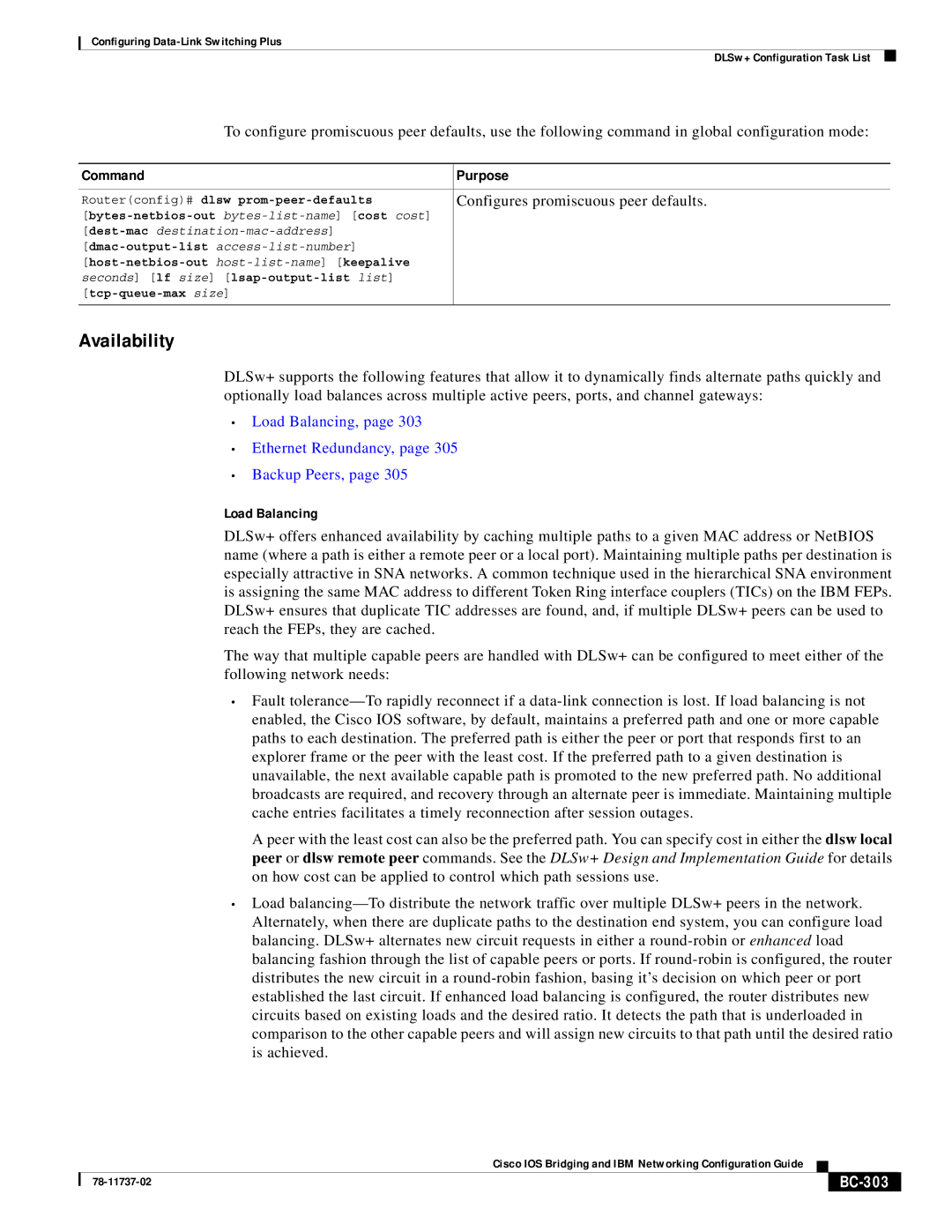Configuring Data-Link Switching Plus
DLSw+ Configuration Task List
To configure promiscuous peer defaults, use the following command in global configuration mode:
Command | Purpose |
| |
Router(config)# dlsw prom-peer-defaults | Configures promiscuous peer defaults. |
[bytes-netbios-out bytes-list-name] [cost cost] | |
[dest-macdestination-mac-address] | |
[dmac-output-listaccess-list-number] | |
[host-netbios-out host-list-name] [keepalive | |
seconds] [lf size] [lsap-output-list list] | |
[tcp-queue-max size] | |
| |
Availability
DLSw+ supports the following features that allow it to dynamically finds alternate paths quickly and optionally load balances across multiple active peers, ports, and channel gateways:
•Load Balancing, page 303
•Ethernet Redundancy, page 305
•Backup Peers, page 305
Load Balancing
DLSw+ offers enhanced availability by caching multiple paths to a given MAC address or NetBIOS name (where a path is either a remote peer or a local port). Maintaining multiple paths per destination is especially attractive in SNA networks. A common technique used in the hierarchical SNA environment is assigning the same MAC address to different Token Ring interface couplers (TICs) on the IBM FEPs. DLSw+ ensures that duplicate TIC addresses are found, and, if multiple DLSw+ peers can be used to reach the FEPs, they are cached.
The way that multiple capable peers are handled with DLSw+ can be configured to meet either of the following network needs:
•Fault tolerance—To rapidly reconnect if a data-link connection is lost. If load balancing is not enabled, the Cisco IOS software, by default, maintains a preferred path and one or more capable paths to each destination. The preferred path is either the peer or port that responds first to an explorer frame or the peer with the least cost. If the preferred path to a given destination is unavailable, the next available capable path is promoted to the new preferred path. No additional broadcasts are required, and recovery through an alternate peer is immediate. Maintaining multiple cache entries facilitates a timely reconnection after session outages.
A peer with the least cost can also be the preferred path. You can specify cost in either the dlsw local peer or dlsw remote peer commands. See the DLSw+ Design and Implementation Guide for details on how cost can be applied to control which path sessions use.
•Load balancing—To distribute the network traffic over multiple DLSw+ peers in the network. Alternately, when there are duplicate paths to the destination end system, you can configure load balancing. DLSw+ alternates new circuit requests in either a round-robin or enhanced load balancing fashion through the list of capable peers or ports. If round-robin is configured, the router distributes the new circuit in a round-robin fashion, basing it’s decision on which peer or port established the last circuit. If enhanced load balancing is configured, the router distributes new circuits based on existing loads and the desired ratio. It detects the path that is underloaded in comparison to the other capable peers and will assign new circuits to that path until the desired ratio is achieved.
| | Cisco IOS Bridging and IBM Networking Configuration Guide | | | |
| | |
| 78-11737-02 | | | BC-303 | |
| | | |
